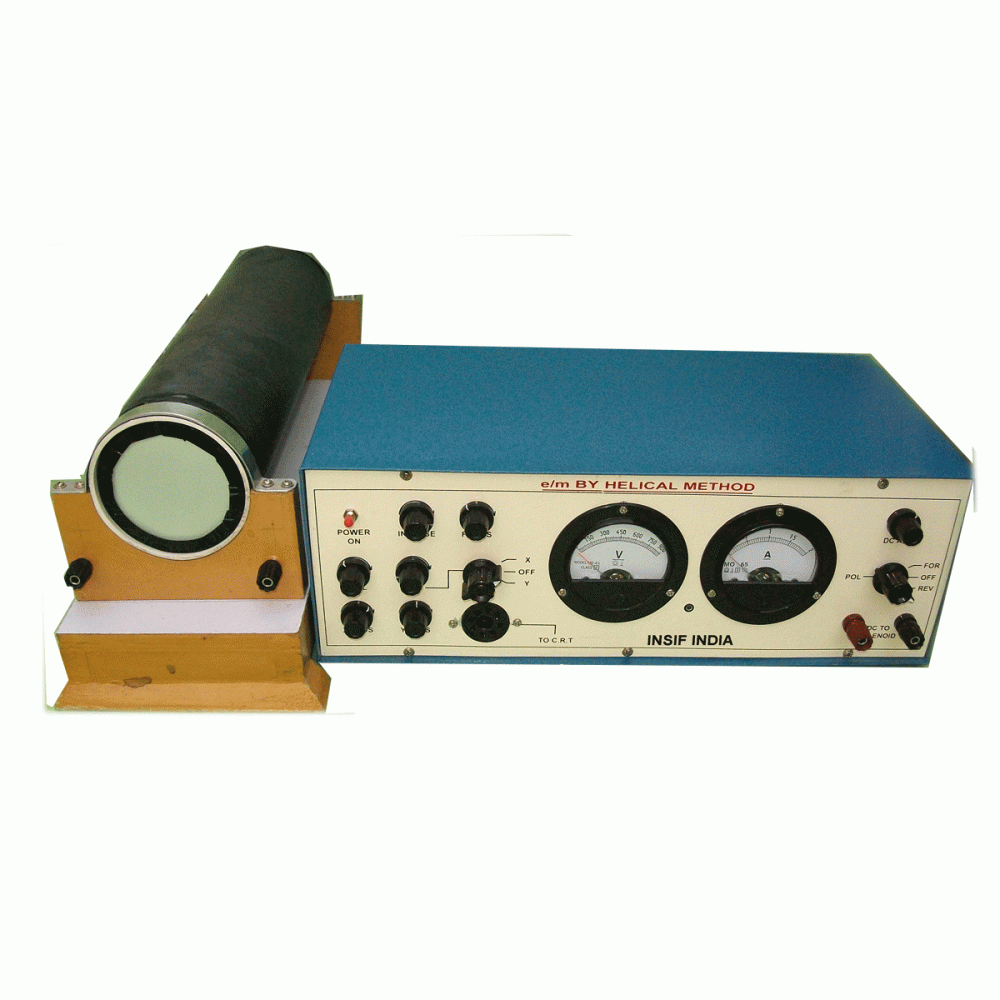Apparatus
- Electron beam source (e.g., thermionic emission in a vacuum tube)
- Helmholtz coils to generate a uniform magnetic field
- Phosphor-coated screen to visualize electron motion
- Power supply for accelerating potential and coil current
- Measuring tools (calipers, scale, or camera for image analysis)
Apparatus
- Electron beam source (e.g., thermionic emission in a vacuum tube)
- Helmholtz coils to generate a uniform magnetic field
- Phosphor-coated screen to visualize electron motion
- Power supply for accelerating potential and coil current
- Measuring tools (calipers, scale, or camera for image analysis)
Procedure
-
Setup: Arrange the electron beam apparatus within the Helmholtz coils.
-
Apply Magnetic Field: Pass current through the coils to generate a uniform magnetic field.
-
Generate Electron Beam: Accelerate electrons using a known voltage VV.
-
Observe Helical Motion: Adjust the beam entry angle so that electrons exhibit a helical trajectory.
-
Measure Parameters:
- Helical radius (rr) from the screen.
- Pitch (pp) from side-view imaging.
- Magnetic field strength (BB) from coil current and known coil parameters.
- Accelerating voltage (VV) to calculate initial velocity (vv).
-
Calculate e/me/m using the relationships:
e/m=2VB2r2e/m = \frac{2V}{B^2 r^2}
Alternative approaches involve analyzing the pitch pp and using time-of-flight techniques.



There are no reviews yet.